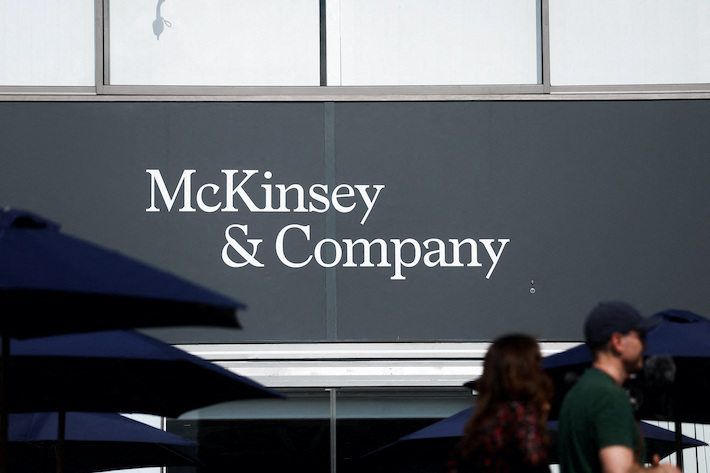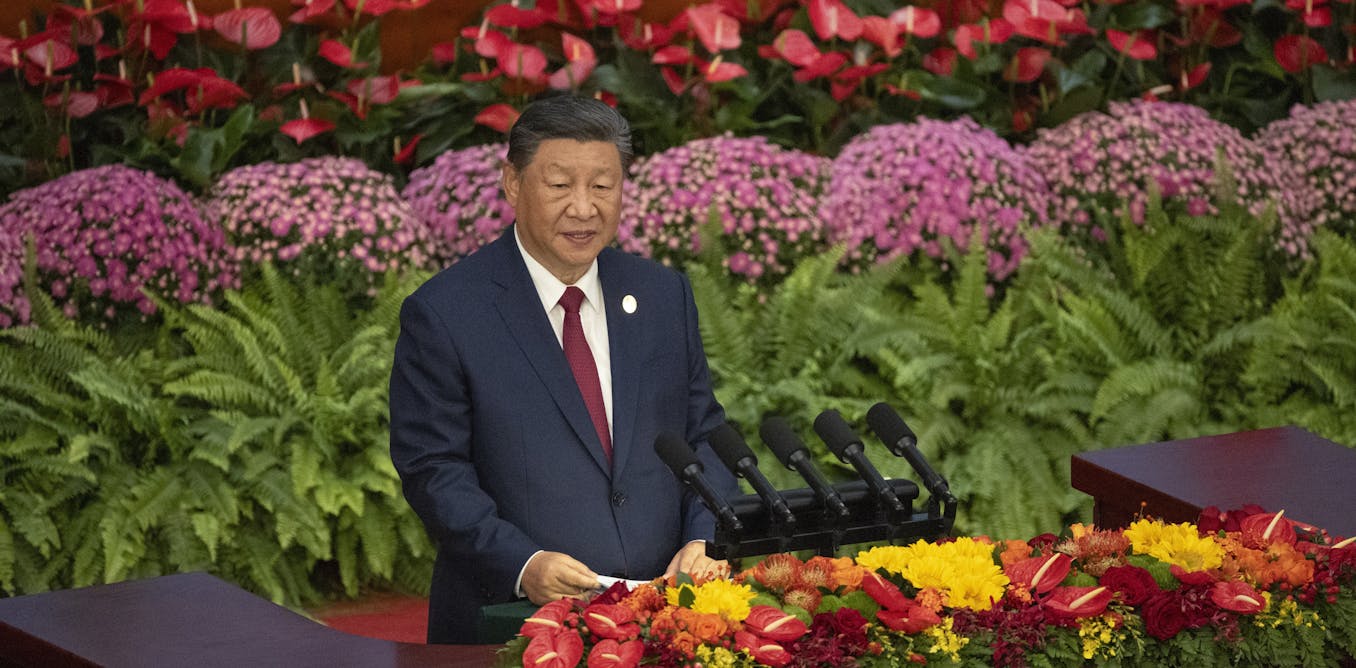China
Steel organization urges ore reserves to fight price manipulation
China Iron and Steel Association disclosed that its latest survey shows evident price manipulation on the iron market. Therefore, it suggests the implementation of a national reserve strategy. According to the Association, China’s iron ore imports account for 75 percent of the world’s total iron ore trade through sea shipping. However, the global market of iron ore is monopolized by the top three foreign miners, including Australia’s BHP Billiton and Rio Tinto and Brazil’s Vale. They have pu …
China Iron and Steel Association disclosed that its latest survey shows evident price manipulation on the iron market. Therefore, it suggests the implementation of a national reserve strategy.
According to the Association, China’s iron ore imports account for 75 percent of the world’s total iron ore trade through sea shipping. However, the global market of iron ore is monopolized by the top three foreign miners, including Australia’s BHP Billiton and Rio Tinto and Brazil’s Vale. They have pushed prices up, which has dragged Chinese steelmakers’ profits down.
Wu Xinchun, vice secretary-general of the Association, pointed out that raw iron output was kept at a low level while iron ore imports have been rising since September last year. In the mean time, prices of rough steel made by China have been pushed higher and higher on the world market, which has buoyed iron ore prices since the end of last year. The price of iron ore is approaching a new record high of 200 U.S. dollars per ton on the spot market.
“The average price of iron ore imports into China stood at about 128 U.S. dollars per ton last year. However, it has risen to some 150 U.S. dollars per ton in the first quarter of this year and currently the price index even has increased to 180 U.S. dollars per ton. That means suppliers are attempting to affect steelmakers’ sentiment on the market,” said Wu.
He believes it is absolutely necessary to establish a national strategy to build iron ore reserves. That strategy, he thinks, is aimed at achieving the balanced development of the industry, rather than higher yields.
A special government organization should be set up to formalize the policy framework of the national reserve system, Wu insisted.
A report last year by the association and 14 major steelmakers to the State Council about the strategic influence of iron ore supply on the industrial security has received a positive response. As a result, the issue of iron ore supply has been on the agenda as part of the overall national resources strategy.
&$
&$By Li Jia, People’s Daily Online &$&$
Read the original:
Steel organization urges ore reserves to fight price manipulation
Annual inflows of foreign direct investment rose to nearly $108 billion in 2008.
The Chinese government faces numerous economic development challenges, including:
(a) reducing its high domestic savings rate and correspondingly low domestic demand through increased corporate transfers and a strengthened social safety net;
(b) sustaining adequate job growth for tens of millions of migrants and new entrants to the work force; (c) reducing corruption and other economic crimes; and
(d) containing environmental damage and social strife related to the economy’s rapid transformation.
The country’s per capita income was at $6,567 (IMF, 98th) in 2009.
Nevertheless, key bottlenecks continue to constrain growth.
The country is one of the world’s largest producers of a number of industrial and mineral products, including cotton cloth, tungsten, and antimony, and is an important producer of cotton yarn, coal, crude oil, and a number of other products.
A report by UBS in 2009 concluded that China has experienced total factor productivity growth of 4 per cent per year since 1990, one of the fastest improvements in world economic history.
Over the years, large subsidies were built into the price structure, and these subsidies grew substantially in the late 1970s and 1980s.
The ministry made the announcements during a press conference held in Xiamen on the upcoming United Nations Conference on Trade and Development (UNCTAD) World Investment Forum and the 14th China International Fair for Investment and Trade.
According to the ministry, China’s ODI grew by 1.1 percent from a year earlier to $56.53 billion, which includes investment of $47.8 billion in non-financial sectors worldwide, up 14.2 percent year-on-year.
It also aims to sell more than 15 million of the most fuel-efficient vehicles in the world each year by then.
Although China is still a developing country with a relatively low per capita income, it has experienced tremendous economic growth since the late 1970s.
Since the late 1970s, China has decollectivized agriculture, yielding tremendous gains in production.
Except for the oasis farming in Xinjiang and Qinghai, some irrigated areas in Inner Mongolia and Gansu, and sheltered valleys in Tibet, agricultural production is restricted to the east.
Fish and pork supply most of the animal protein in the Chinese diet.
Oil fields discovered in the 1960s and after made China a net exporter, and by the early 1990s, China was the world’s fifth-ranked oil producer.
China is among the world’s four top producers of antimony, magnesium, tin, tungsten, and zinc, and ranks second (after the United States) in the production of salt, sixth in gold, and eighth in lead ore.
China’s exploitation of its high-sulfur coal resources has resulted in massive pollution.
Taiyuan and Xi’an are important centers in the less populated interior, and Lanzhou is the key communications junction of the vast northwest.
Business
McKinsey Reduces Workforce by 500 in Overhaul of China Operations – WSJ

McKinsey plans to cut about 500 jobs in China, reducing its workforce by a third as part of a strategic revamp focused on minimizing security risks and decreasing government-linked clients.
McKinsey Job Cuts in China
McKinsey & Company, the renowned US consulting firm, is reportedly laying off approximately 500 employees as part of a significant restructuring in its Chinese operations. This decision reflects the company’s shift away from government-linked clientele, a strategy aimed at mitigating political and security risks in the region.
Workforce Reduction
The job cuts will result in a reduction of McKinsey’s workforce in China by roughly one-third. Over the past two years, the firm has been downsizing its personnel across Greater China, which includes Hong Kong and Taiwan, affecting hundreds of positions. As of June 2023, McKinsey employed nearly 1,500 individuals in Greater China.
Strategic Separation
To address rising security concerns, McKinsey is separating its China unit from its global operations. This move aims to enhance operational security while navigating the complexities of the Chinese market. McKinsey has not yet commented on these developments following a request for information.
Source : McKinsey Cuts 500 Jobs Amid Revamp of China Business – WSJ
China
India’s Setback in Bangladesh May Not Equate to China’s Advantage
The fall of Bangladeshi Prime Minister Sheikh Hasina is detrimental to India, as her regime fostered strong ties. China may gain influence but faces significant challenges in capitalizing on this opportunity.
Strategic Loss for India
The recent fall of Bangladeshi Prime Minister Sheikh Hasina marks a significant strategic setback for India. Hasina was an unusually pro-Indian leader, and her departure has created fears that China may capitalize on this political upheaval. However, while China’s influence in Bangladesh might grow, such assumptions about its immediate gains are overstated.
Challenges to Chinese Expansion
Beijing’s opportunity to bolster its presence in Bangladesh is hindered by significant challenges. The ongoing crisis in Bangladesh could slow China’s attempts to extend its influence in the region. Despite the current turmoil favoring China, the practicalities of political dynamics in Bangladesh may make it difficult for Beijing to fully seize this chance.
Impact on India-Bangladesh Relations
Sheikh Hasina’s government served as a crucial ally for India, fostering a stable relationship that addressed longstanding concerns regarding cross-border issues and support for minority groups. The partnership facilitated vital infrastructure projects, including railway connections that enhance regional integration under Indian leadership. With Hasina’s government now collapsed, the hard-won gains in India-Bangladesh relations are at risk.
Source : India’s loss in Bangladesh not necessarily China’s gain
China
Why China is seeking greater presence in Africa – the strategy behind its financial deals

China plans to deepen its relationship with Africa, pledging $51 billion in loans and investments, aiming for increased diplomatic ties, economic growth, and expanded influence amidst Western concerns about debt-trap diplomacy.
China’s relationship with Africa is set to deepen. At a summit in Beijing in early September, China’s president, Xi Jinping, pledged to deliver US$51 billion (£39 billion) in loans, investment and aid to the continent over the next three years, as well as upgrading diplomatic ties.
Beijing’s close engagement with Africa is not new. Since 1950, the first overseas trip of the year for Chinese foreign ministers has almost always been to one or more African countries. But Xi’s commitments are still sure to raise concerns in the US and other western countries, which are competing with China for global influence.
They may well also bring back fears of China using “debt-trap diplomacy” to push African countries into default and thereby gain leverage over them. Such is the strength of this narrative that South Africa’s president, Cyril Ramaphosa, felt compelled to deny it at the summit.
The notion of Chinese debt traps, particularly the infamous case of Sri Lanka’s port of Hambantota that, in 2017, was leased by the Sri Lankan government to a Chinese company to raise liquidity, has been debunked several times.
But with African populations and economies growing, and China’s engagement with them continuing to deepen, it is important to understand what China hopes to achieve with its diplomacy.
China’s engagement with Africa is strategic as well as economic. Whether it’s gaining votes at the UN, better access to resources, or increasing the international use of its currency, China’s diplomatic relations with Africa play into its ambitions of being a major player in a multipolar world.
Chinese children hold national flags as they prepare for the arrival of Togo’s president, Faure Gnassingbe, at Beijing International Airport ahead of the summit.
Ken Ishii / Pool / EPA
The long game
From a purely economic perspective, Africa is a potentially lucrative market for China. With its under-served market and booming population, the scope for expansion into Africa offers huge potential for Chinese firms.
This is particularly true now that the African Continental Free Trade Area (which was established in 2018) opens up the possibility of cross-border value chains developing in Africa.
Most of the goods that China imports from Africa are natural resources. Many of these resources have strategic relevance, for example, in manufacturing batteries. In return, Chinese companies export a wide range of goods to Africa, including manufactured products, industrial and agricultural machinery, and vehicles.
In terms of foreign direct investment, Chinese companies are still only the fifth-largest investors in Africa after their Dutch, French, US and UK counterparts. But their ascent has been relatively quick, and while western companies are focused on resources and the financial sector, Chinese ones also invest heavily in construction and manufacturing.
Chinese companies are major players in Africa’s construction sector, often working on projects funded by loans from Chinese banks to African governments. In 2019, for example, Chinese contractors accounted for about 60% of the total value of construction work in Africa.
Some of the infrastructure financed by China has done little to improve trade or economic development in Africa. And it has, admittedly, also contributed to the increased debt burden of several African countries.
The costly expressways that connect Nairobi in Kenya and Kampala in Uganda to the respective international airports, for instance, have made life easier for city elites and international travellers. But they have not led to economic growth.
So, China has moved to recalibrate its infrastructure finance in recent years. In 2021, Xi introduced the concept of “small and beautiful” projects better targeted at the partner country’s needs – a concept he repeated at the recent summit.
It is this alignment with the requests of African leaders that differentiates China’s engagement with Africa from that of the west. A key request of many African leaders is for investment in manufacturing value chains and imports of African processed goods rather than just raw resources.
Xi’s keynote speech addressed these two concerns. He promised more investment in key sectors and to allow more African goods to enter China without duties.
The construction of the Nairobi Expressway was supposed to decongest Kenya’s capital city, Nairobi.
Daniel Irungu / EPA
China’s support to African nations is political as well as economic. Its policy of non-interference in Africa’s internal affairs have been well received by African leaders – a sharp contrast to western nations who have often tied their support to the respect of certain social or economic conditions.
This has, in turn, bolstered China’s diplomatic influence on the continent. A good indicator of this influence is how many countries maintain diplomatic relations with Taiwan, which the Chinese government sees as part of China’s territory. In Africa, only Eswatini has full relations with Taiwan and just a handful of other countries have representative offices.
Another Chinese goal is to expand the global reach of its currency, the renminbi. Its motive here is to challenge the dominance of the US dollar, which gives America control over transactions anywhere in the world.
Since the late 2000s, the People’s Bank of China has signed bilateral swap agreements with Morocco, Egypt, Nigeria and South Africa to conduct transactions in renminbi. And China is aiming to increase the use of renminbi in official lending, both through domestic banks such as the China Development Bank and regional institutions such as the New Development Bank.
Much like Africa’s western partners, China pursues both political and economic interests in its dealings with the continent. But, with western leaders paying little attention to Africa, China doesn’t need to pursue debt-trap diplomacy to increase its influence there. It just needs to put forward a better partnership offer to gain ground.
This article is republished from The Conversation under a Creative Commons license. Read the original article.












